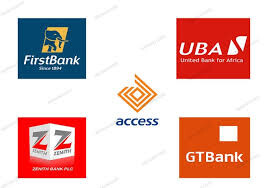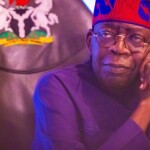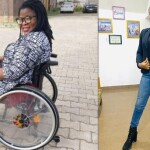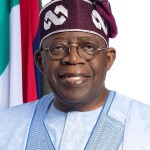To crowd out a minority whose return falls below the investment to give them sustainable access, bankers committee spend billions to make their websites ableist, bling-bling—for awards.
By Elijah Olusegun
When the Nigerian banking industry first dabbled in financial inclusion, the CBN and its Bankers Committee chucked in Principle No. 5 among its Sustainable Banking Principles. They declared provision of financial services to individuals and communities that ‘traditionally have had limited or no access to the formal financial sector’. One of the fifth principle’s implementation steps states: A bank should seek to provide opportunity for increased access to its products and services through platforms such as cash centres, e-branches, and mobile money, and increasing efficiency to serve more clients. A bank should consider making its physical locations and facilities accessible to physically challenged persons.
At that time, the facilities were mainly the banking halls, ATMs, and documents. Online banking idea had yet to catch fire. And the internet penetration stood at 46 percent in Nigeria. People with disabilities wouldn’t expect much of web accessibility, as part of the fifth principle.
But about a decade later, broadband penetration fully hit 100 percent. Nigeria’s ICT uptake got on the upswing, and the rally traveled across the continent. Nigeria Communication Commission Executive Chairman Umar Danbatta recently said Nigeria now controls over 80 percent of the telecommunication market in Africa. Nigerian banks have since jumped on the information super highway, in full career, with big budgets in tow.
Nine banks, including the five first-tier, forked out over N80 billion on ICT innovations and products in 2022 alone, going by their annual reports.
Like everyone else, Nigeria’s PWDs, too, tuned up their hopes. They now had cause to expect greater financial inclusion and access the CBN Sustainable Principle No. 5 provides. At some point, the NITDA also waded in on the matter of inclusivity. The hope rose with the intervention of the Web Accessibility Initiative whose World Wide Web Consortium developed a global accessibility standard: the Web Content Accessibility Guidelines (WCAG). All websites—their owners and developers—must conform to the standard. It’s a matter of ethics.
But those expectations have now become illusions.
In frustration last year, the Nigeria Association of the Blind issued a statement protesting the non-implementation of this Principle 5.
“We don’t have ATMs with speech, access to loans and other benefits enjoyed by other people.” Ishiaku Adamu, the national president of the association said at a press conference in Abuja.
Other PWD leaders who have spoken with ER insisted financial inclusion the principle embodies is only on paper in Nigeria. The apex bank, they said, is not ready to make the deposit banks and other financial institutions implement the policy.
Jolomi Fenemigho narrated his frustration on GTB’s app in an interview with ER. “When we called them to complain, they never respond,” the Wordpress nerd said. The bank he patronizes shelled out N9bn on ICT last year. The experience is similar across the industry.
Most of the Nigerian banks, however, reel in the conceit they are inclusive. They tuck the word into their mission statements, tout it each time they roll out apps the PWDs cannot access, or braille forms that still need a sighted person to fill and complete. And, for good measure, the banks flaunt their plaques and laurels of recognitions as the most inclusive or the most accessible in Nigeria.
The terms actually mean different things to different banks. Diamond Bank claimed it sucked in 10 million unbanked Nigerians in 2017; for that, it won itself the Most Inclusive Bank of the Year Award. First Bank will contest that. It claims its women empowerment drive makes it the most inclusive. Others will latch on to related metaphors to make their statements. But none of them rightly claims to have invested in inclusive ICT that provides access to PWDs seeking banking services and products.
Measured on the scale of the WCAG, many of these banks, ER findings reveal, fall short of the global standard for web contents accessibility.
The standard comprises three levels of conformance, 100 percent each: A, AA, AAA—being the lowest, mid-range, and the highest respectively. Each level sets out features of web contents—text, alternate text, video, audio, colour, space, tactile features, and others; it then provides guidelines, more than 50 in all, on how developers and builders should make the website easy to access and use for as many people as possible, including people with one disability or a combination.
Only one out of the ten banks ER analysed in July made the highest level of accessibility. And that outlier is not even among the first-tier banks—First Bank, United Bank of Africa (UBA), Guaranty Trust Bank (GTB), Access Bank, and Zenith Bank. These five spent about N69bn combined on ICT bells and whistles in 2022, Access Bank being the highest spender, and Sterling Bank, a second-tier bank, spending the least, much lower than UBA, the lowest spender of the big league.
According to www.siteimprove.com , a platform that analyses web contents accessibility and other metrics in line with the WCAG, Sterling Bank is the only bank that sweeps the board: 100 percent conformance at every level. Even at that, the Nigerian disability communities can’t say exactly what is accessible or usable on the bank’s website. It lacks speech feature to assist a blind customer navigate. It text fonts are not adjustable either. The only video content is of no use to deaf customers. All its subtitle and text features are disabled. In spite of this, Sterling Bank has been grossing in awards. It won the Nigeria Technology Award Best Bank Website of the Year in 2015, and the Most Innovative ICT Product in The Banking Sector in 2019. It spent over N900 million on ICT last year.
The highest percentage of web accessibility among the first-tier banks, on average, stands at 87 percent, for UBA. This is followed by Access Bank’s 65 percent, GTB’s 67 percent, Zenith’s 58 percent, and First Bank’s 51 percent. The five’s spending follows the same order: N5bn, N27bn, N9bn, N20bn, and N8bn.
While all of the banks analysed—except ECOBANK with no result—conform at the lowest level of accessibility, only three, UBA, Sterling, WEMA conform fully. GTB and Fidelity do 67 percent each at the midrange level. The highest level of conformance sees Sterling, Access, STANBIC-IBTC, UBA, Fidelity conform 100 percent, 72 percent, 76 percent, 62 percent, 67 percent respectively. At that level, First Bank conformance stands at 0 while WEMA is not available. Zenith and GTB scrape by at 47 percent and 50 percent respectively.
As the first onsite verification earlier revealed, these percentages are mere metrics. In reality, Nigerian banks’ websites and digital contents remain as inaccessible as ever to PWDs.
It then means First Bank, for instance, spent N9bn on ICT innovations that have no priority to conform to the best standards of accessibility for its clients with disabilities. The bank has yet to respond to ER enquiry on the bank’s disability policy and its poor showing with respect to the WCAG standard.
The failure hardly can be an oversight. The bank has either concluded that going to all that trouble for a minority adds no financial return on investment because of the figure and financial positions of such client base; or it has come to that unshakeable belief in its salesy interpretation of inclusion and access, assuming nothing is amiss.
But for those battling digital exclusion in Nigeria’s banking, what accessibility means stands a world apart from the buzzwords the banks’ media spin doctors like to puff about. Many of those ER interviewed said accessibility and inclusion are all about the degree of independence a PWD enjoys. That’s what WCAG strives to provide. And that’s what the banks have yet to consider—hands-on.
Some accessibility researchers blame web designers and back-end developers the banks consult. “They pay more attention to satisfying their customers rather than users of the websites,” Solomon Adepoju and his fellows stated in their 2019 work: Keeping with the Global Trend: An Evaluation of Accessibility and Usability of Nigerian Banks’ Websites.
Fenemigho has even written off these Nigerian developers. “If they build a bank website or app that is accessible to us blind customers, they do it by mistake,” he said. “They don’t believe we can benefit from information technology the way they do.” In his despair, he doesn’t see WCAG as a measure anyone can enforce, and as such can never address the problem. He thinks a mandate by the Nigerian legislature will have more bite than a set of guidelines the W3C cannot impose.
But the Discrimination Act 2023 has provisions for accessibility and inclusion in many ramifications.
Maybe it’s just a carte blanche, riddled with loopholes.







